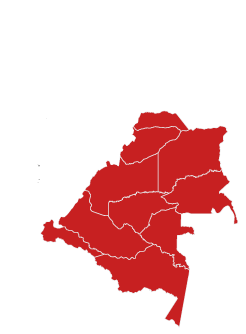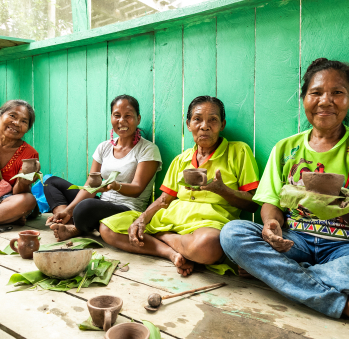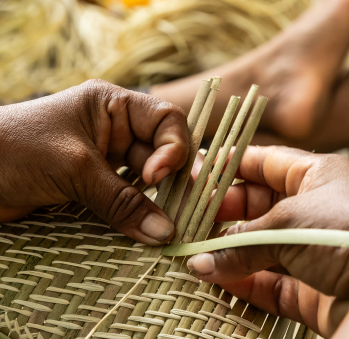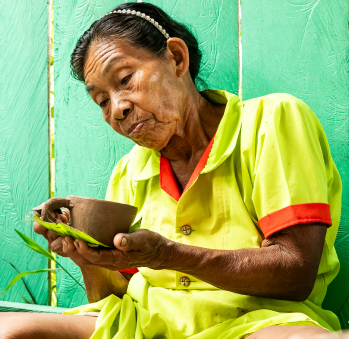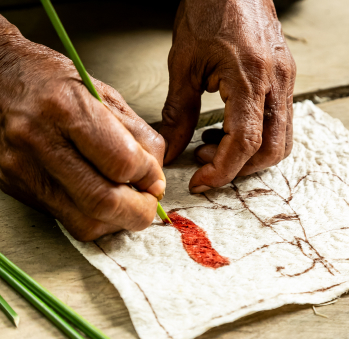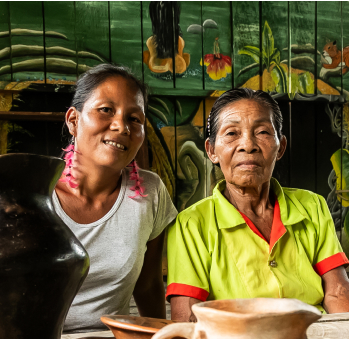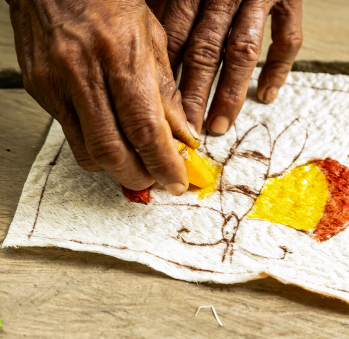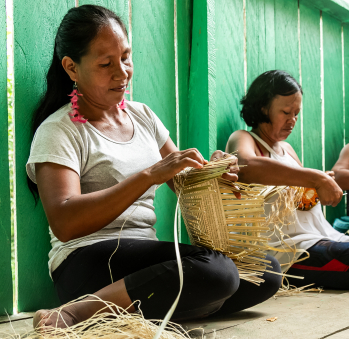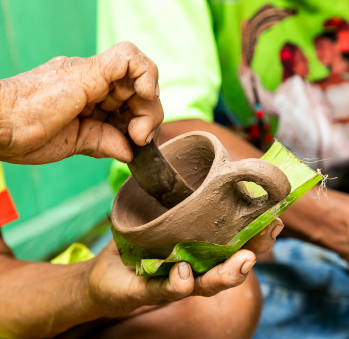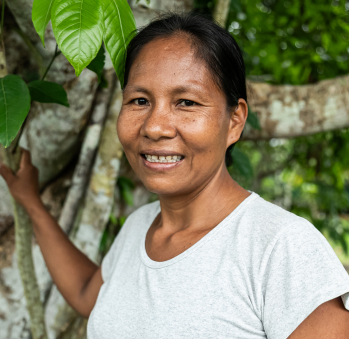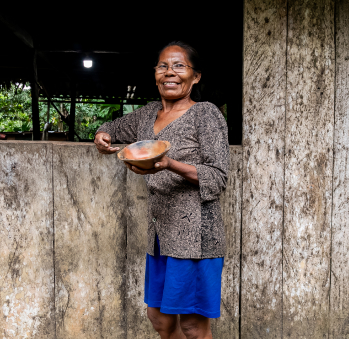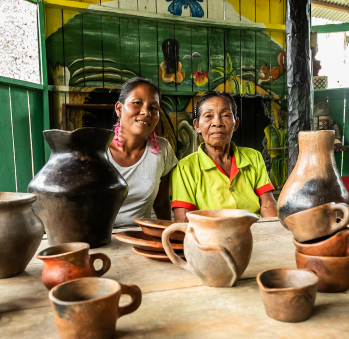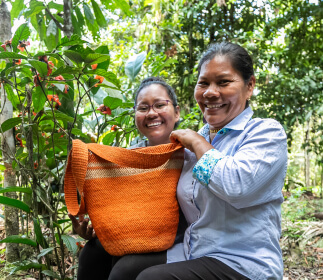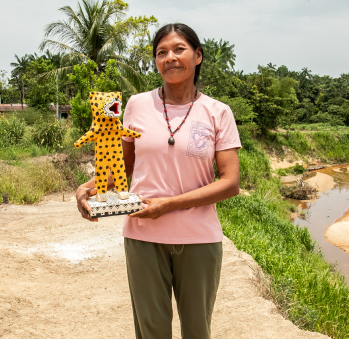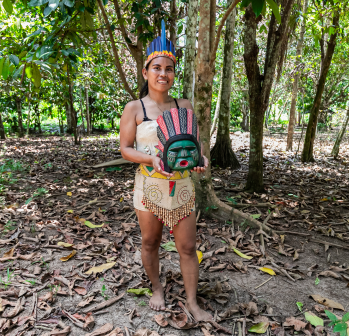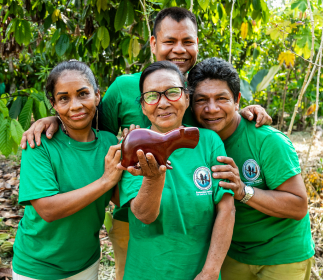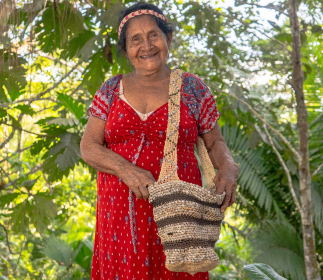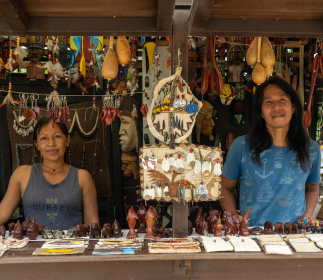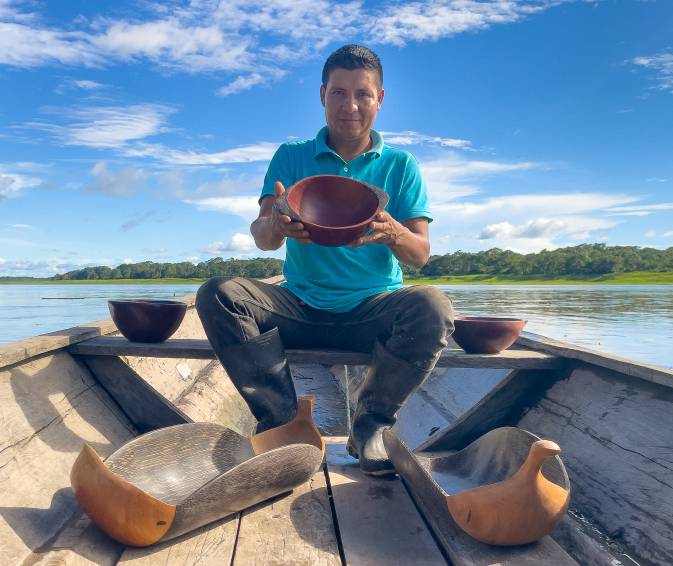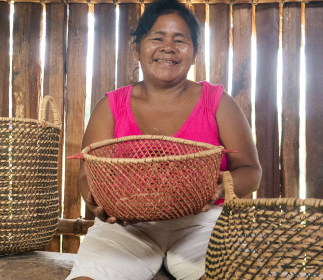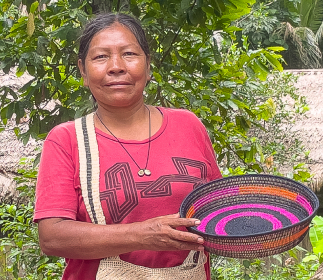Magri Lorena Moran Ángel y Grimanesa Luis de Ángel
Workshop: Cestería San Martín Mowacha
Craft: Weaving and Basketry
Trail: Amazon Route
Location: San Martin de Amacayacu, Amazonas
Magri Lorena understands that she is the heir to a legacy. She feels the responsibility to prevent the stories that founded her community from fading away with the passing of the elders. And she knows that every time she weaves a basket or kneads clay, she is invoking her ancestors and bringing to the forefront the original myth of the Tikuna people—the one in which it is told that the four children of the father, Yoxi, Ipi, Mowacha, and Aixküna, were born from his knee, the result of a wasp sting. This was a punishment from his wife, who sought revenge for his mistreatment by tying her up in the rainforest to dispose of her.
She is aware that it is a powerful story, yet she is sensible enough to acknowledge that, though these tales are often sad, they also contain moments of joy. And in any case, these things happen, no matter how hard we try to avoid them or look the other way. With this understanding of life’s natural ups and downs, the harshness and sweetness of it all, she wants the children of today to grow into the ones who will carry on this heritage. She knows it’s not an easy task, that it’s becoming increasingly difficult to engage the younger generations, who often don’t fully grasp the weight of the past or the value of traditional crafts. Nevertheless, she strives to lead by example, trusting that the younger ones will take on the mission.
She celebrates the exuberance and originality of her people’s creation myth. In this myth, the punished father’s knees swelled so bad, like a woman’s belly during pregnancy, that he felt the pain and transformation of the body. In the Tikuna universe, it is the father who gives birth, and as divine justice, he feels the pain of labor that, in the world’s history, has always been endured by the mother during childbirth. Magri Lorena likes to reflect on how each child born from this myth is destined to learn a craft. She knows that she is the heir of Aixküna, the goddess of basketry, and of Mowacha, who was born with the knowledge of weaving hammocks and making sieves. It is for this reason that she named her workshop after this weaving deity. Both were the first ones to work with clay among her people.
Magri shares with us that, in the last decade, her community has been actively reviving the Tikuna people’s weaving traditions. They have done so with a clear focus on reforesting chambira, the essential raw material for weaving, within their own chagras. For over ten years, they have been planting this palm tree, and once it’s ready, they skillfully extract the fiber while avoiding its many thorns. Today, Magri represents the 45 women artisans in her reserve.
Her mother taught her to twist the chambira and then to weave the baskets. From her grandmother, Grimanesa, she is learning how to mold the clay to create the traditional Tikuna pots, used to collect water or ferment chicha. This wise woman, who says she’s been stained with clay since she was 14, also passed on the stories about the ritual of transforming clay in the fire. She is the one who told Magri about the birth of clay—the sacred soil that is not just any soil, but the excrement of the “grandfather”, as the Tikuna call the Yewaex or Pao i, the boa constrictor that guards the riverbank. In the old days, those who collected the clay were shamans, who would leave offerings to honor the spirit. Today, the artisan women know that the ground they walk on is sacred, and they must not dishonor the grandfather, for if they do, the pots will crack. Having this knowledge, along with that of the few other potters in their community—Matilde, Francisca, and Dominga Santos, and Emma Luis—is considered a great privilege.
Thus, it becomes clear that the myths are an essential part of the craftsmanship of her people. And while Magri sometimes feels somewhat alone in the monumental task of preserving these traditions, she knows that everything she has accomplished comes from the heart, and she hopes that those of us on the outside—curious to explore the mighty Amazon—will be inspired to visit this remote corner of San Martín de Amacayacu, a place accessible only by boat, deep in the river’s tributaries. It will be an opportunity to meet the members of the Paujil and Cascabel clans and discover a vine that shares the name of the serpent. With this vine, they weave, and from its seeds, they create ritual rattles used to keep the traditions alive. With grandmother Grimanesa and granddaughter Magri Lorena, you’ll have the chance to discover another layer of the rich Amazonian universe.
Craft
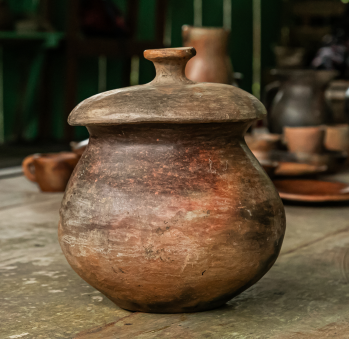
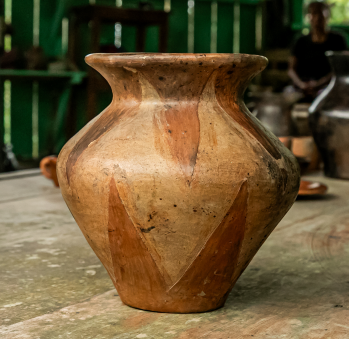
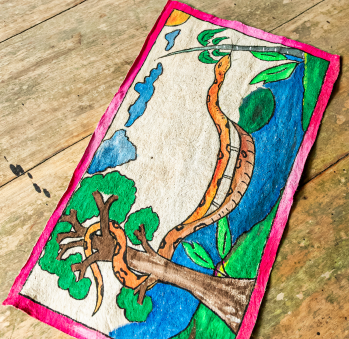
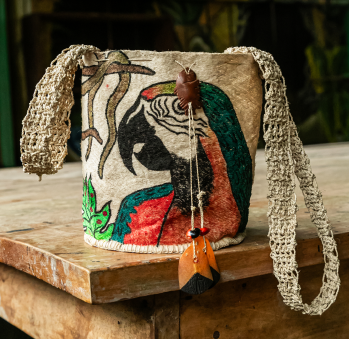
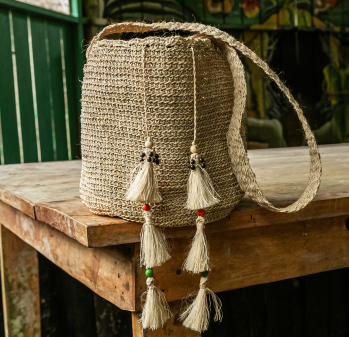
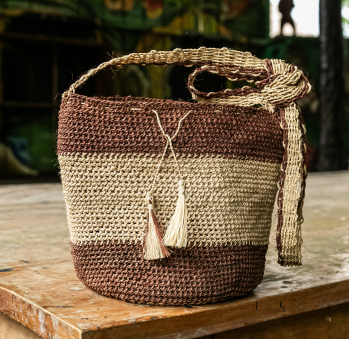
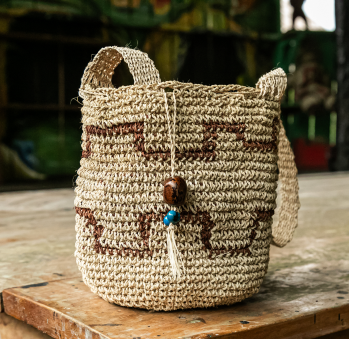
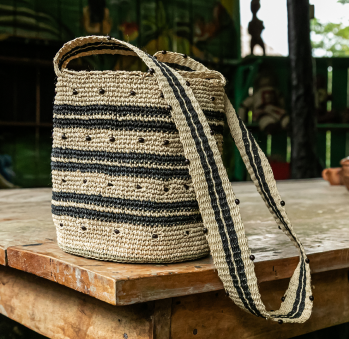








Artisans along the way
Artisans along the way
No puede copiar contenido de esta página

